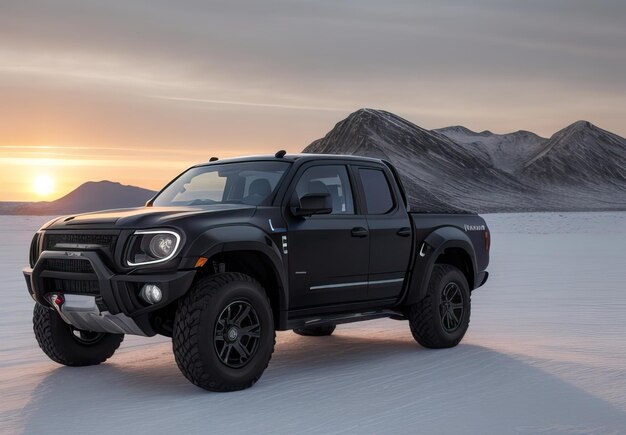
Electric crossovers are all the rage these days. As electric vehicles (EVs) become more popular, many carmakers are focusing on crossover-sized cars. While these are often marketed as SUVs, they’re actually smaller and are better thought of as crossovers. Two of the most popular models in this category are the Tesla Model Y and Hyundai Ioniq 5, both of which have been out for a few years now.
Given the high regard for both these cars, you might wonder if one is better than the other. While neither of these cars is a bad choice, one does have a slight edge. We compared them head-to-head to determine which one comes out on top.
The first thing you’ll notice about the Tesla Model Y and Hyundai Ioniq 5 is their design. Both have unique looks compared to other manufacturers’ cars, though not as distinct when compared to other models from their own brands.
The Tesla Model Y resembles other Tesla vehicles. Tesla has developed a consistent design language across its models, except for the yet-to-be-released Cybertruck. This similarity can make it hard to distinguish between different Tesla models, but the Model Y still manages to look fresh and modern with its minimalist design.
On the other hand, the Ioniq 5 stands out with its unique appearance. Hyundai has adopted a new pixel design aesthetic that channels a 1980s vibe in the best possible way. It also looks modern, thanks to the sleek, angular lines along its sides and the long rows of lights on the back.
In the end, design preference is personal. Both cars look great, making this a tie.
The interior designs of these cars reflect their exterior aesthetics, both being functional but distinct in style.
Inside the Tesla Model Y, you’ll find a minimalist design with few buttons and controls. Most functions are managed through a display screen at the front of the car, including climate controls. Some might not appreciate this, as physical buttons and knobs are easier to use without looking while driving.
For those who prefer physical controls, the Ioniq 5 offers a middle ground. While many features are accessible through the main display, the climate controls are managed by capacitive buttons below the screen. This screen also supports Android Auto and Apple CarPlay, unlike Tesla’s system, which uses its own infotainment software.
Other interior aspects differ as well. The Model Y offers more cargo space, with 30.2 cubic feet compared to the Ioniq 5’s 27.2 cubic feet, plus additional space in its large front trunk. The seat materials also vary, with vegan leather in the Tesla and fabric in the Hyundai.
This aspect is also subjective. If you like minimalism, you’ll prefer the Tesla. While Tesla’s built-in system is superior, the Ioniq 5 offers broader compatibility with Android Auto and CarPlay.
Both the Tesla Model Y and Hyundai Ioniq 5 benefit from the instant power characteristic of modern electric cars, yet their performances are not equal.
The Tesla Model Y offers two drivetrains: the Long Range model, which can go from 0 to 60 mph in 4.8 seconds with a top speed of 135 miles per hour, and the Performance model, which does 0 to 60 mph in 3.5 seconds and reaches a top speed of 155 miles per hour.
The Ioniq 5, available in single- or dual-motor configurations, has various drivetrains. The fastest Ioniq 5 configuration can go from 0 to 60 mph in 4.5 seconds but still does not match the Tesla Model Y Performance. The lower-end models of the Ioniq 5 are significantly slower, taking over 7 seconds to reach 60 mph.
Performance-wise, the Tesla Model Y is the clear winner.
When it comes to range and charging, the Tesla Model Y again holds an advantage. The Long Range version offers 330 miles on a single charge, while the Performance model provides 303 miles. These are impressive numbers.
The Ioniq 5 doesn’t quite match up. The base SE Standard Range model offers 220 miles, while the other models provide either 266 or 303 miles, depending on whether you choose all-wheel drive or rear-wheel drive.
While the Tesla offers a longer range, the Ioniq 5 compensates with faster charging speeds. It can charge at 350 kilowatts, reaching 80% in just 18 minutes. The Tesla, with a 250kW charging speed, can still get 50% charged in 15 minutes, which isn’t bad but not as fast as Hyundai.
In the balance between range and charging speed, most will likely prefer the longer range, giving Tesla another win.
Finally, we consider pricing and availability. Both the Tesla Model Y and Hyundai Ioniq 5 are available for purchase now. The Ioniq 5’s price ranges from $41,450 for the base model to $52,600 for the Limited model.
The Tesla Model Y is pricier, starting at $50,490 for the Long Range model and $54,490 for the Performance model.
Clearly, the Hyundai Ioniq 5 is more cost-effective.
In summary, the Hyundai Ioniq 5 is an excellent car with a cool design and great features. However, the Tesla Model Y offers better performance and longer range, making it the superior option. Both cars are great choices, but if you’re undecided, the Model Y might be the better pick.